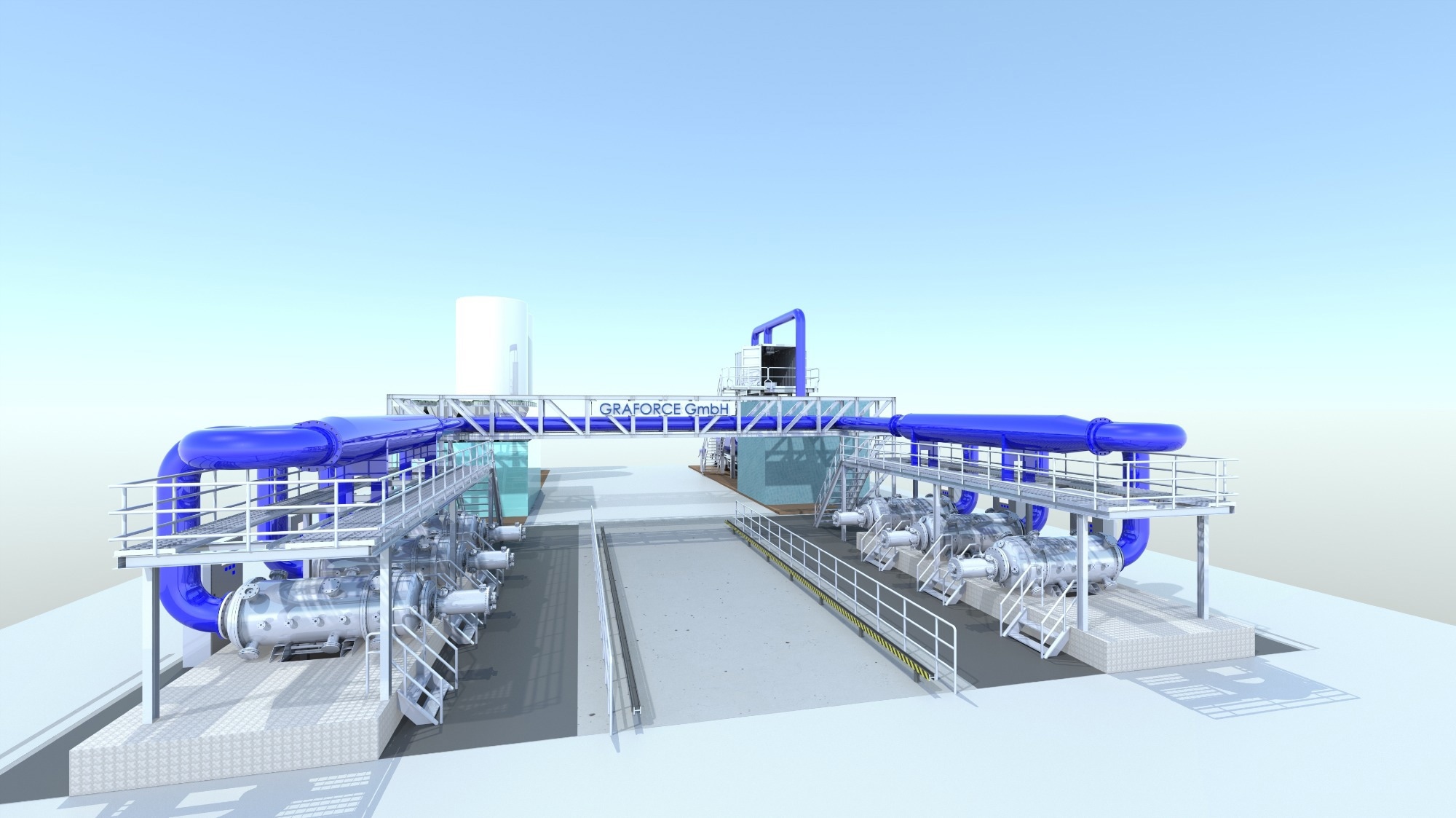Graforce, Germany’s leading provider of zero carbon hydrogen plants, and Worley, a leading global engineering and project delivery business, are cooperating to scale methane electrolysis (plasmalysis) starting in Australia, Pacific, Asia and China.
 Methane Plasmalysis plants – graphics shows a 12 MW plant - convert natural gas, LNG, flare gas and other hydrocarbons into hydrogen without emitting carbon dioxide or any other greenhouse gas into the atmosphere. This allows gas consumers to switch to clean-burning hydrogen without changing their energy supplier or way of transportation. Image Credit: Business Wire
Methane Plasmalysis plants – graphics shows a 12 MW plant - convert natural gas, LNG, flare gas and other hydrocarbons into hydrogen without emitting carbon dioxide or any other greenhouse gas into the atmosphere. This allows gas consumers to switch to clean-burning hydrogen without changing their energy supplier or way of transportation. Image Credit: Business Wire
Plasmalysis is a game changing technology, which converts natural gas, LNG, flare gas and other hydrocarbons into hydrogen without emitting CO2 or any other greenhouse gas into the atmosphere. This allows gas consumers to switch to clean-burning hydrogen without changing their energy supplier or mode of transportation. Graforce and Worley will present plasmalysis plants at APPEA 2023 in Adelaide, Australia (15-18 May) at the Worley sponsored Hydrogen Pavilion showcasing latest innovations in the hydrogen industry and its impact on decarbonization of industries and fossil fuels.
Australia is among the largest producers of natural gas and one of the world's leading fuel suppliers. Projects to supply Germany with LNG and green hydrogen are in progress. At the same time, the country aims to reduce its CO2 emissions by more than 40 percent by 2030. Sustainable technologies like plasmalysis are an essential requirement to meet both, economic and climate targets.
“The entire APAC region is looking for green technologies for existing energy sources to achieve climate targets. The cooperation with Worley is an important step for us to quickly scale our methane plasmalysis and to open up these markets,” said Dr. Jens Hanke, CTO of Graforce.
Worley provides large scale engineering, procurement, and construction services to the energy, resources, and chemicals industries. Worley will provide engineering and project delivery services for plasmalysis plants customers in Australia and Asia. In the modular plants, a high-frequency plasma field generated by renewable electricity splits hydrocarbons such as methane into their molecular components: hydrogen and solid carbon. Compared to water electrolysis, plasmalysis requires only one-fifth the energy to produce the same amount of hydrogen. A single 20-megawatt plant can convert about 70,000 metric tons of methane into hydrogen per year and eliminate about 200,000 metric tons of CO2 emissions.
“As we scale up towards the vast quantities of renewable energy and hydrogen required to meet our Net Zero goals, our medium-term reliance on fossil fuels and in particular, natural gas and LNG, is a given. Plasmalysis marries these two realities together and enables faster decarbonisation utilising existing infrastructure. Plasmalysis is likely to be a valuable tool in the decarbonisation toolbox and contribute to our company purpose of delivering a more sustainable world,” says Gillian Cagney, Worley ANZ Managing Director.